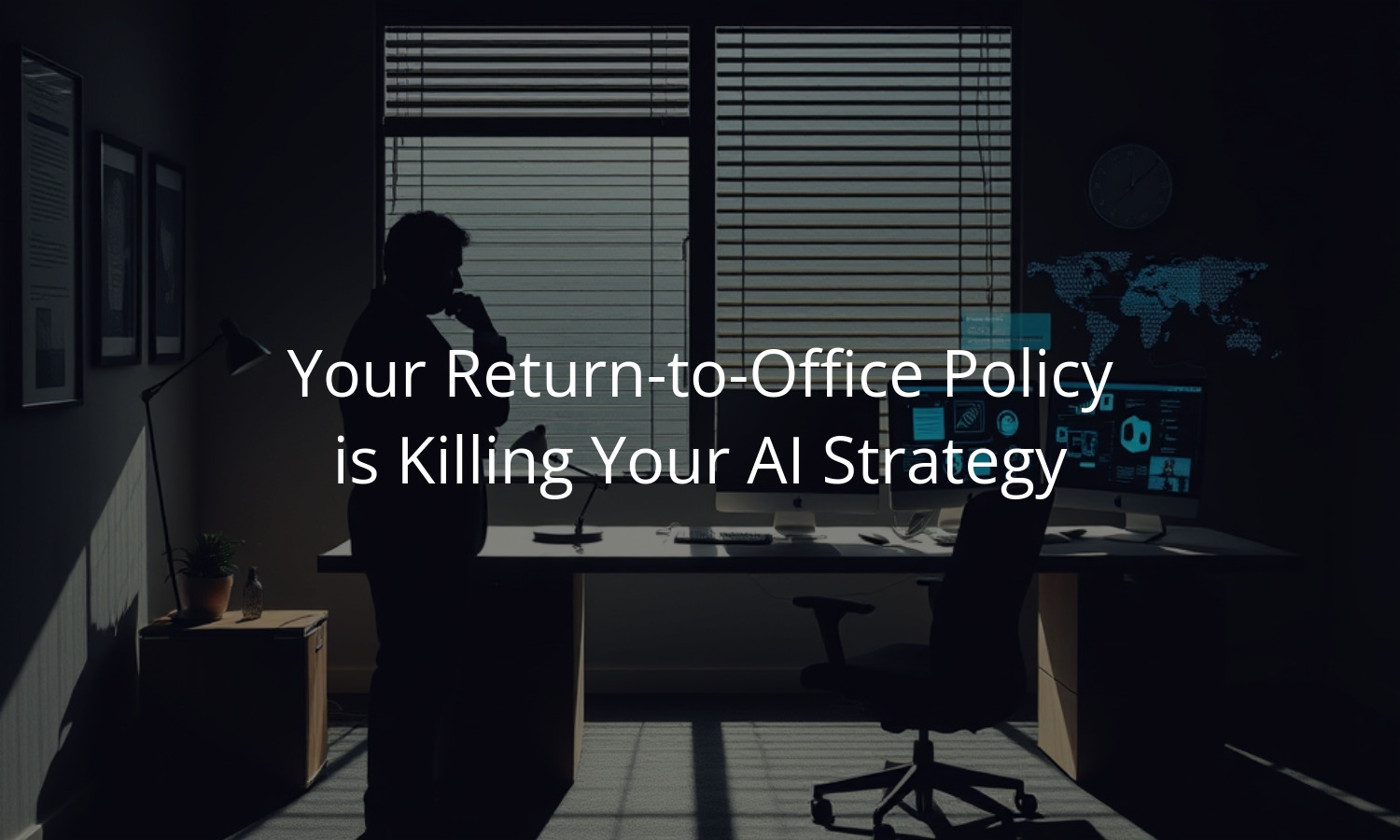I came across the following tweet right after WordCamp US 2025, and it stopped me cold.
If you suck at doing remote work, you’ll suck at managing AI.— Hiten Shah (@hnshah) September 6, 2025
I’ve spent most of my career working remotely – both before and after the pandemic shifted everyone’s perspective on distributed teams. This observation hits differently.
The parallel is stark and uncomfortable for many organizations still struggling with remote work management.
The Surveillance Trap
Throughout my career, I’ve watched companies tie themselves in knots trying to measure remote productivity. Camera-always-on policies. Managers obsessively checking GitHub commits. Orwellian desktop monitoring software that takes screenshots every few minutes. Time-tracking tools that border on the absurd.
These approaches miss the point. Productivity isn’t about looking busy at your desk.
It never was.
Yet many organizations default to surveillance when they can’t physically see their team members typing.
While it might feel that the problem is remote work, it’s not. The problem is management’s inability to shift from time-based to outcome-based evaluation. Companies that measure “hours logged” instead of “problems solved” struggle with remote teams. Physical presence was their primary metric for engagement.
The AI Agent Reality
Imagine this same management philosophy applied to AI agents. The headless agents working in your codebase, analyzing your data, or handling customer interactions.
AI agents will never show up to the office. They won’t relocate to your new headquarters. Their cameras will never be on. They don’t attend happy hour or team-building exercises. They work when they work, produce what they produce, and exist entirely outside traditional management frameworks.
If your organization struggles to trust remote humans, how will you possibly manage autonomous agents?
The Control Illusion
The return-to-office (RTO) movement reveals something crucial about organizational maturity. Companies demanding physical presence often do so because they’ve never developed proper systems for measuring actual value creation. They confuse activity with achievement, conflating presence with productivity.
A colleague of mine once said, “AI won’t replace developers; developers who use AI will replace those who don’t.” I’d extend this further: companies that can’t trust and effectively manage remote workers will be displaced by those that can. Doubly so as AI becomes central to competitive advantage.
The same skills are required for successful remote management and effective AI integration. These include clear communication, outcome-focused metrics, trust-based relationships, and asynchronous collaboration.
Learning to Measure What Matters
Successful remote-first companies have already solved this puzzle. They’ve learned to evaluate contribution through:
- Deliverable quality rather than hours worked
- Problem-solving capability rather than meeting attendance
- Communication effectiveness rather than physical visibility
- Outcome achievement rather than process compliance
These metrics translate directly to AI agent management. An AI agent that consistently delivers high-quality code, solves complex problems, and integrates well with your systems is valuable regardless of how it “looks” while working.
Organizations clinging to control-based management are building practices that become increasingly obsolete. They’re installing monitoring software and demanding RTO compliance. Their competitors are developing frameworks for managing autonomous, distributed intelligence – whether human or artificial.
The companies mastering remote collaboration today are inadvertently building the foundation for AI-augmented teams tomorrow. They’re learning to communicate asynchronously, measure outcomes effectively, and trust systems over surveillance.
Practical Implications
Remote-ready companies can integrate AI agents seamlessly because they already operate with distributed, outcome-focused workflows. They know how to set clear expectations, measure deliverables, and maintain quality without constant oversight.
Office-dependent companies will struggle because their entire management structure assumes physical presence equals productivity. They’ll either under-utilize AI agents through excessive oversight or fail to integrate them effectively into existing workflows.
The consequence is striking. The very organizations most resistant to remote work are the least prepared for the autonomous nature of AI assistance.
The solution isn’t complex, but it requires a fundamental shift in management philosophy. Organizations need to:
- Start with remote team success. Master the art of managing distributed human intelligence before adding artificial intelligence to the mix. Learn to communicate clearly, set measurable objectives, and evaluate based on outcomes.
- Develop AI-ready frameworks. The tools and processes that make remote teams successful – clear documentation, asynchronous communication, outcome-based evaluation – are the same ones that enable effective AI integration.
- Embrace output over input. Stop measuring time, presence, and activity. Start measuring results, quality, and impact. This shift benefits both remote workers and AI agents.
The Bottom Line
AI agents represent the ultimate remote workers. They’re completely autonomous, never present in traditional senses, and produce value through pure output rather than visible effort.
If your organization can’t trust remote employees, can’t measure productivity without surveillance, and can’t adapt to distributed workflows, you’re not ready for AI integration.
You’re also miles away from being ready for AI agents.
The companies that will thrive in an AI-augmented future are the ones already excelling at remote collaboration. They’ve learned to value contribution over compliance, results over visibility, and trust over surveillance.
Those still fighting the remote work revolution are preparing for yesterday’s challenges while tomorrow’s opportunities pass them by.
